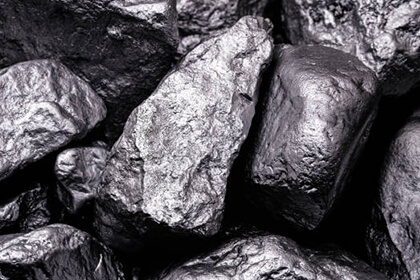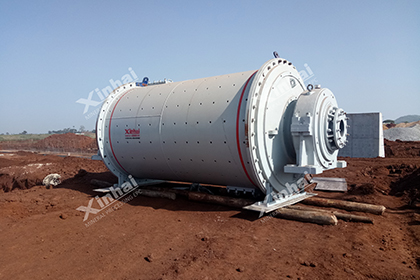How to Build a Manganese Processing Plant: A Comprehensive Guide
 Shirley
Shirley
 Nov 14, 2023
Nov 14, 2023
 1165
1165
If you want to know more details about equipment, solutions, etc, please click the button below for free consultation, or leave your requirements!

Building a manganese processing plant requires careful planning, engineering expertise, and adherence to industry best practices. This comprehensive guide provides an overview of the key steps involved in constructing a manganese processing plant, including project planning, site selection, design and engineering, equipment procurement, construction, commissioning, and operational considerations.
01Project Planning
Back1.1 Feasibility Study: Conduct a thorough feasibility study to assess the technical, financial, and economic viability of the project. Evaluate the availability and quality of manganese ore deposits, market demand, processing technologies, infrastructure requirements, and potential risks.
1.2 Project Scope and Objectives: Clearly define the project scope, objectives, and desired production capacity. Determine the type of manganese products to be produced, such as ferroalloys, electrolytic manganese dioxide (EMD), or manganese sulfate.
1.3 Financial Planning: Develop a comprehensive financial plan, including cost estimates, revenue projections, financial modeling, and return on investment analysis. Secure adequate funding through equity, loans, or partnerships. Before we have talked about the cost of manganese processing plant.
02Site Selection and Acquisition
Back2.1 Geological Survey: Conduct a geological survey to identify potential manganese ore deposits. Assess the quality, quantity, and accessibility of the ore. Consider factors like proximity to transportation routes, water sources, and utilities.
2.2 Environmental Assessment: Conduct an environmental impact assessment to identify and mitigate potential environmental risks. Ensure compliance with local regulations and obtain necessary permits and licenses.
2.3 Land Acquisition: Acquire or lease the required land for the processing plant. Consider factors like land availability, ownership, legal considerations, and community engagement.

03Design and Engineering
Back3.1 Process Design: Engage experienced engineers to design an efficient and cost-effective manganese processing flowchart. Determine the optimal process route, considering factors like ore characteristics, desired product specifications, and available technologies.
3.2 Equipment Selection: Select appropriate equipment for various stages of the processing plant, such as crushing, screening, grinding, gravity separation, magnetic separation, and chemical processing. Consider factors like capacity, efficiency, reliability, and maintenance requirements.
3.3 Infrastructure Design: Design plant infrastructure, including buildings, storage facilities, utilities, and waste management systems. Ensure compliance with safety standards, ergonomics, and operational efficiency.

04Equipment Procurement
Back4.1 Vendor Selection: Identify reputable equipment vendors and suppliers with expertise in manganese processing. Evaluate their track record, technical capabilities, after-sales support, and pricing.
4.2 Equipment Specifications: Define detailed equipment specifications based on the process design and production requirements. Request proposals and quotations from vendors, considering factors like equipment performance, warranties, and spare parts availability.
4.3 Contract Negotiation: Negotiate contracts with equipment vendors, ensuring clear terms and conditions, delivery schedules, payment terms, and technical support agreements.
05Construction and Commissioning
Back5.1 Construction Management: Hire a competent construction team or contractor to oversee the construction process. Develop a construction schedule, monitor progress, and ensure compliance with safety, quality, and environmental standards.
5.2 Equipment Installation: Supervise the installation of equipment, ensuring proper alignment, calibration, and integration into the processing plant. Conduct thorough testing and commissioning to verify equipment performance.
5.3 Plant Optimization: Fine-tune the process parameters, optimize workflows, and conduct performance tests to achieve desired production targets. Train the operational staff on plant operation, maintenance, and safety procedures.
06Operational Considerations
Back6.1 Workforce Recruitment: Recruit and train a skilled workforce, including operators, technicians, and maintenance personnel. Provide ongoing training and development opportunities to ensure operational efficiency.
6.2 Supply Chain Management: Establish a robust supply chain for manganese ore procurement, chemicals, consumables, and spare parts. Develop relationships with reliable suppliers to ensure smooth operation and minimize downtime.
6.3 Quality Control: Implement stringent quality control measures throughout the processing plant, from raw material inspection to final product testing. Adhere to international quality standards and customer specifications.
6.4 Environmental Management: Develop and implement comprehensive environmental management practices. Monitor and mitigate air and water pollution, waste generation, and land reclamation. Comply with environmental regulations and engage with local communities.
07Conclusion
BackBuilding a manganese processing plant requires careful planning, diligent execution, and adherence to industry standards. From project planning to operational considerations, each step plays a vital role in ensuring a successful and efficient operation. By following this comprehensive guide and engaging experienced professionals, investors can construct a manganese processing plant that is technologically advanced, environmentally sustainable, and financially viable.
 +86 18716000713
+86 18716000713 xlyin@xinhaimining.net
xlyin@xinhaimining.net




 Message
Message Chat Now
Chat Now


















